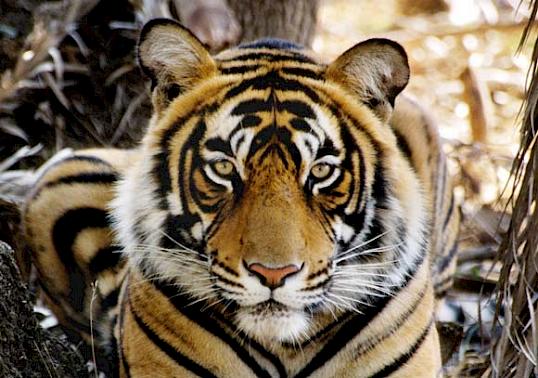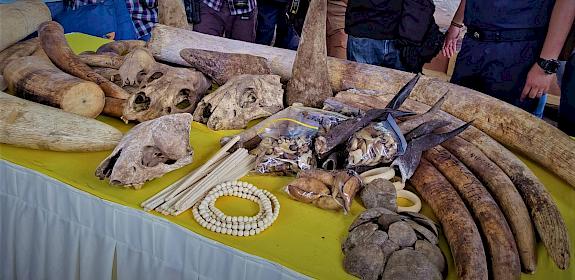Tiger recovery efforts progressing, urgent action still needed to fight poaching
New Delhi, India, 17th May 2012—Tiger range countries in their first meeting to review efforts on doubling the number of wild tigers by 2022 reported significant progress, but recognized that urgent and elevated action is still needed to halt poaching.

In November 2010 at the “Tiger Summit” in St. Petersburg hosted by the Government of Russia and the World Bank, the 13 Tiger Range Governments and partners committed to doubling the number of wild tigers by 2022 (TX2). They presented the Global Tiger Recovery Program (GTRP), which represents the plans towards meeting this goal.
The meeting in New Delhi, held from 15-17th May 2012, was the first time since the Tiger Summit that senior government officials from all 13 countries have met to review progress on implementation of the GTRP and plan the next steps.
During the meeting, TRAFFIC presented new figures from its latest research into the rising number of Tiger part seizures taking place in Asia. With 53 seizures occurring each year, levels remain high. The analysis also identified persistent Tiger trade hot-spots such as Kathmandu, Hanoi and the Russia/Northeast China border.
Poaching of tigers, to feed consumer demand for their body parts and products, is now the main factor reversing the gains made by governments, donors and other partners working towards the 2022 goal.
Nearly all Tiger range countries spoke of the poaching problem and efforts they are taking on the ground to tackle it. These include strengthening capacity and introducing new, innovative law enforcement monitoring tools, such as M-STrIPES and SMART, to better manage protected areas with Tigers. It is essential that a Tiger trade monitoring system be established as information such as this can assist enforcement efforts in the field where it is most needed.
Countries also considered new approaches to reduce consumer demand for Tiger derivatives.
“We are pleased that the approaches we recommended on demand reduction are being considered to support implementation of the GTRP,” said Sabri Zain, Director of Advocacy and Campaigns, TRAFFIC International.
“It is critical that we implement new approaches to changing consumer behaviour if we are to stamp out poaching successfully in the long run and therefore in achieving TX2.”
Before the meeting, WWF had released results of a preliminary assessment of 63 legally protected areas in seven Tiger range countries that showed only 22, or 35%, maintain WWF’s minimum standards of protection. This indicated that Tigers in most of the protected areas are still very vulnerable to poaching.
“Steady progress is being made towards meeting the goal of doubling wild Tiger numbers,” said Mike Baltzer, Leader of WWF’s Tigers Alive Initiative.
“But Tiger range governments must urgently and seriously step up action to eliminate poaching if they do not want their investments to go to waste.”
In a sign indicating Tiger range countries are increasingly working together to save the Tiger across their borders, the meeting witnessed the signing of a bilateral agreement on trans-border co-operation between India and Nepal and another between India and Russia.
“This gathering of Tiger range countries shows that the momentum to save tigers is indeed building, but the pressure on the species continues,” said Ravi Singh, Secretary-General and CEO, WWF-India.
“Co-ordinated anti-poaching measures across Tiger range countries are called for. These need to be scaled up and implemented urgently to achieve zero poaching.”



